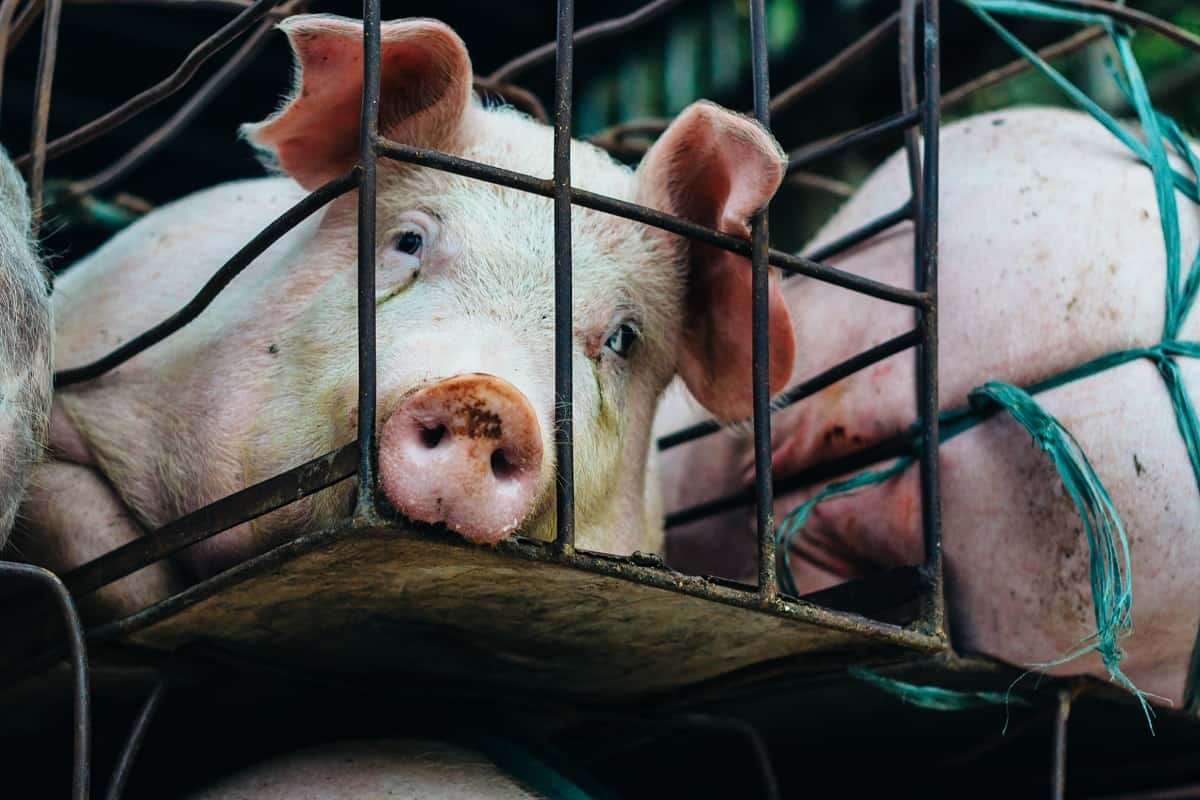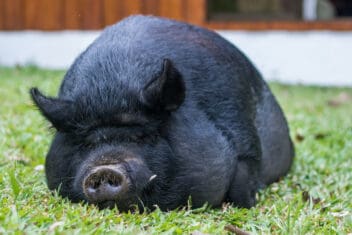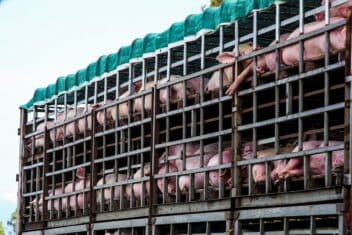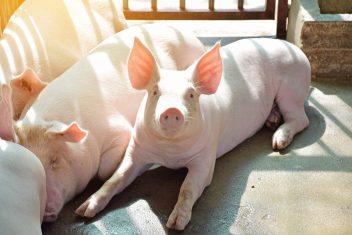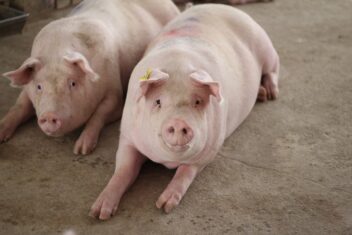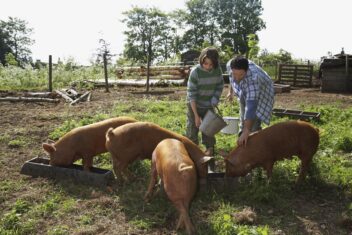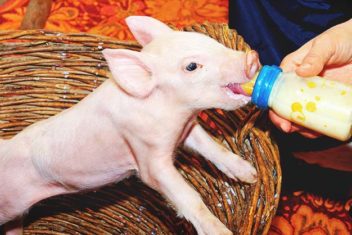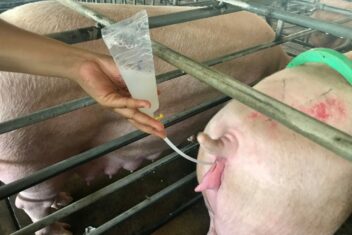In my experience, pigs are some of the easiest farm animals you can raise. This is a sentiment I have heard echoed by many other farmers as well, with pig keepers, both novice and advanced, saying that pigs don’t require a lot of fuss or extra maintenance.
After a few years of raising pigs, chickens, and sheep, I agree with this even more. Chickens require a lot of daily work (collecting eggs, cleaning out nest boxes, etc) while sheep require routine maintenance that can be costly and time-consuming such as shearing.
When it comes to raising pigs, though, all you really have to do is provide them with a clean barn, food and water.
However, there are a few health issues from greasy pig to mycoplasmal pneumonia that can wreak havoc with a herd of pigs. One common issue that can often arise in pigs is porcine stress syndrome.
Porcine stress syndrome, sometimes referred to as PSS or malignant hyperthermia, is sometimes confused with shipping fever but is slightly different. Bacteria causes shipping fever, or Pasteurella, while porcine stress syndrome is an inherited disorder.
Here’s what you need to know about this disease – and how to prevent and treat it when it affects your pigs.
What is Porcine Stress Syndrome?
Porcine stress syndrome is a condition in pigs that causes hyperthermia. A genetic disease, it is caused by an intolerance of stress because of a faulty ryanodine receptor. This causes a pig’s cells to rise in calcium and for their metabolism to go through the roof.
There are three primary “manifestations” that can be a sign of porcine stress syndrome. The first, and most devastating, is sudden death. Typically, this happens during transport or other stressful times in a pig’s life.
Another way you may notice this disease is only after slaughtering an animal. It can cause pale, soft meat that is of poor quality and usually rejected by the butcher. This happens when the muscle pH falls after slaughter, ruining the protein structure in the meat.
The last way porcine stress syndrome rears its ugly head is when pigs are exposed to anesthesia, typically the anesthetic halothane. This causes extreme hyperthermic reactions with symptoms including:
- Arrhythmia
- Trembling
- Stiffness or rigidness
- Heart failure
- Lameness
- Panting or rapid respiration
- Excessive sweating
- Blotchy or reddened skin
- Muscle atrophy (particularly around the hindlimbs and back)
- Back muscle necrosis
- Slow growth rates
- Facial twitching
- Elevated temperature (above 106°F)
Often, the very first sign of this disease is a shaking tail or muscle contractions. PSS causes a rapid increase in metabolism and causes a pig to give off a lot of heat and carbon dioxide.
Sadly, in some pigs (particularly in sows, growers, and weaners), this disease can cause death within as little as 15-20 minutes. Therefore, preventing PSS is almost always more effective than learning about ways to treat it.
What Causes Porcine Stress Syndrome?
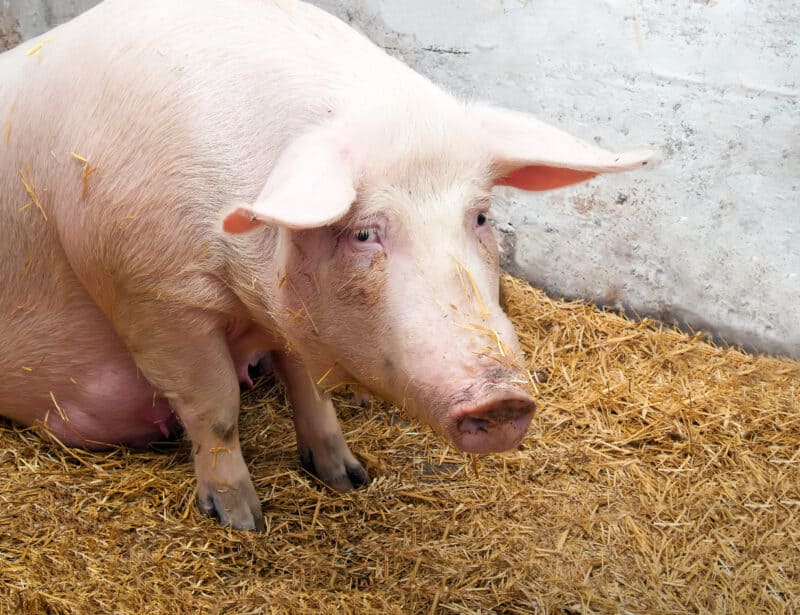
As the name implies, stress is the most common cause of porcine stress syndrome. However, it can also be caused by exposure to various anesthetics, like halothane.
It is not spread from pig to pig, which is quite unlike shipping fever, a bacterial disease. Because both can manifest during or after shipping and transport, however, it’s tough to tell the two apart. Shipping fever usually presents additional respiratory symptoms besides some of those listed above.
Fortunately, PSS is rare in the US and even rarer in backyard herds of pigs. It is most common on commercial farms where stressful conditions are not addressed before transport.
Because this is a genetic disease, it is also more common in certain breeds, such as Poland-China, Landrace, and Pietrain. It has, thankfully, become less common in recent years as the practice of breeding large pigs with well-developed musculature of these breeds dropped away in favor of rearing other commercial breeds (like Yorkshire) instead.
It is very rarely seen in piglets but is most common in sows, growers, and weaners.
Preventing Porcine Stress Syndrome
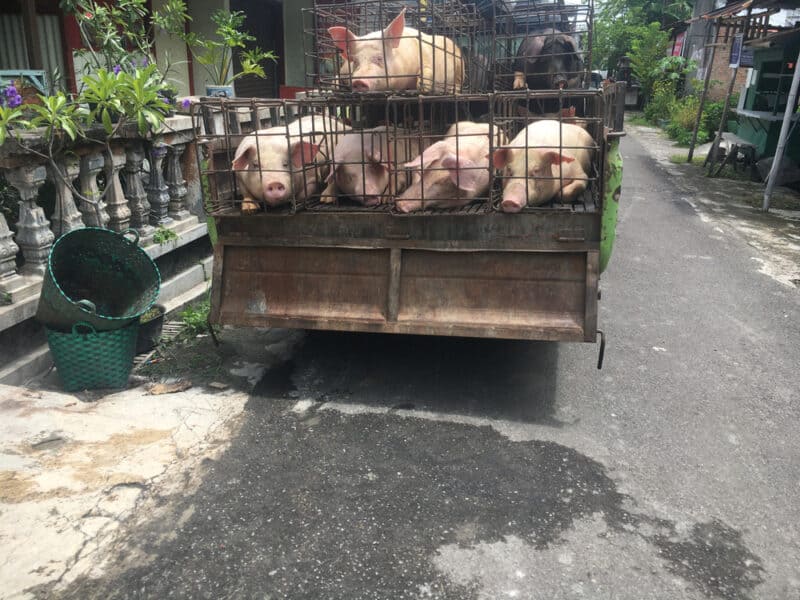
Preventing PSS is far easier than treating it, as sudden death is one of the most common symptoms of this disease. Here are some tips on how you can do that.
1. Reduce Stress at Slaughter and Transport
Reducing stress is essential when handling pigs. Avoid using feed additives, which can affect the ability of a pig to handle stress. Make sure your pigs are given free choice to water and feed as well.
A clean environment is also essential to maintaining a stress-free herd.
However, it’s also important that you consider a pig’s state of mind at shipment and slaughter. Loading and transporting can be extremely stressful for a pig. Move pigs during the coolest time of the day, provide them with water, and consider giving them wetted shavings if it’s hot.
Keep the trailer moving so that there is always good airflow and don’t overload the trailer with pigs. Move in small groups of 3-5 whenever you can.
When working with pigs, you must remain calm. Frustration by the handler can often cause a pig to become stressed, as can the misuse of handling devices like prods (which should not be used).
2. Test and Select Breeding Stock
If you aren’t sure whether it is PSS that is causing problems in your herd of pigs, you may have to consider conducting genetic testing. There are companies that will do this for you for a fee. It is not necessarily cheap, but if you are in the business of raising pigs, it is not a bad idea to consider testing.
This testing can identify which pigs are carriers of the gene. If you have any pigs that carry the gene, cull them and select breeding stock that does not carry the PSS gene instead.
3. Consider AI Breeding
PSS is traditionally passed around in a herd from carrier stock. Maintaining a PSS gene-free herd is essential in preventing this problem in the future. Fortunately, PSS is uncommon in most herds, but you may need to introduce new genetics if that is not the case.
Consider AI breeding, using PSS-free genes on healthy females. You can always introduce a boar to the herd to do this, but AI breeding may allow you to eliminate problems related to PSS faster.
Treating Porcine Stress Syndrome
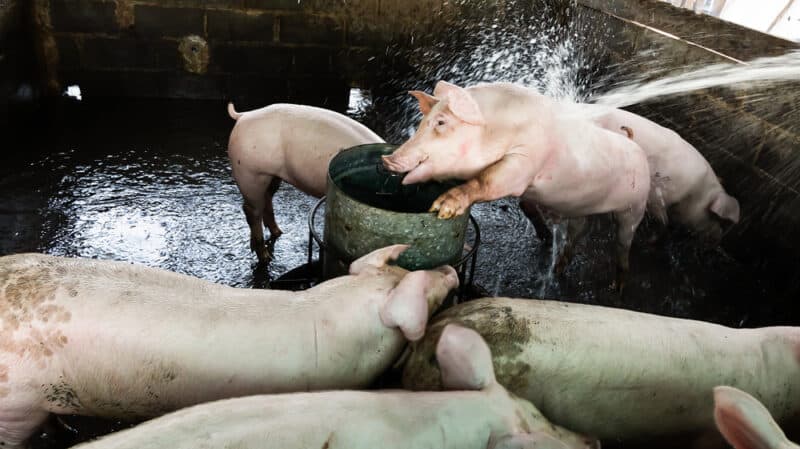
Luckily, PSS is not very common among backyard herds of pigs – but it does still happen. If your pigs are affected, here’s what you need to do.
1. Remove Stressors
Again, eliminating stress is key in treating and preventing porcine stress syndrome. If you have any pigs that are affected and suffering, remove any stressors, environmental or otherwise, as soon as you can and to the best of your ability.
2. Do Not Move
If you have a downed pig that is exhibiting any of the symptoms listed above, don’t move her. Call a veterinarian immediately. Causing a pig to move and exert herself can lead to worsened symptoms or death.
You can, however, spray her with cold water, which should help reduce her temperature.
3. Sedate and Medicate
Do not attempt these treatments without first consulting a veterinarian. As I mentioned earlier, PSS often has symptoms that mimic those of other diseases. It won’t do you and especially your pigs any good to treat the wrong disease. Get a vet’s opinion.
Other diseases and conditions that present similarly to PSS include hypocalcemia (seen in lactating sows), internal hemorrhages, twisted bowel, pyelonephritis, and more.
Your vet may recommend sedating the animal with a fast-acting agent and then using hydrocortisone and bicarbonate to relieve the lactic acidosis in the muscles. If it was an exposure to an anesthetic like halothane that caused the issue, your vet may use a medication like dantrolene sodium to reverse the symptoms.
Other medications might be used, like glucocorticoids, too. Some vets even use injections of calcium gluconate to help manage the fever-like symptoms of this disease.
Addressing Porcine Stress Syndrome
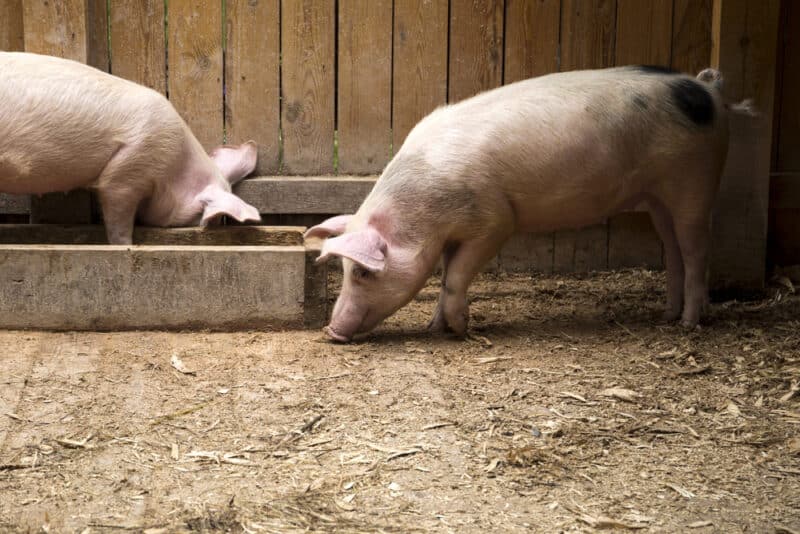
Of course, the very best thing you can do to prevent and treat porcine stress syndrome among your pigs is to make sure stress is kept to a bare minimum. This should be done at all times, but especially before and during transport of any kind and slaughter.
PSS is often compared to post-traumatic stress disorder in humans. Although this disease is not common in pigs, it can cause long-term effects that reduce the quality of life for your pig but also destroy its carcass value when it is time for slaughter.
Therefore, reducing stress in your herd is imperative. Not only can a stress-free herd help reduce the likelihood of PSS, but it can lower the likelihood that other diseases, like shipping fever and mycoplasma arthritis, affect them, too.
Don’t worry – to keep your herd stress-free, you don’t have to start a meditation routine or offer them chai tea! You just need to make sure they are handled carefully and provided with thoughtful nutrition and clean housing. It’s as easy as that.
